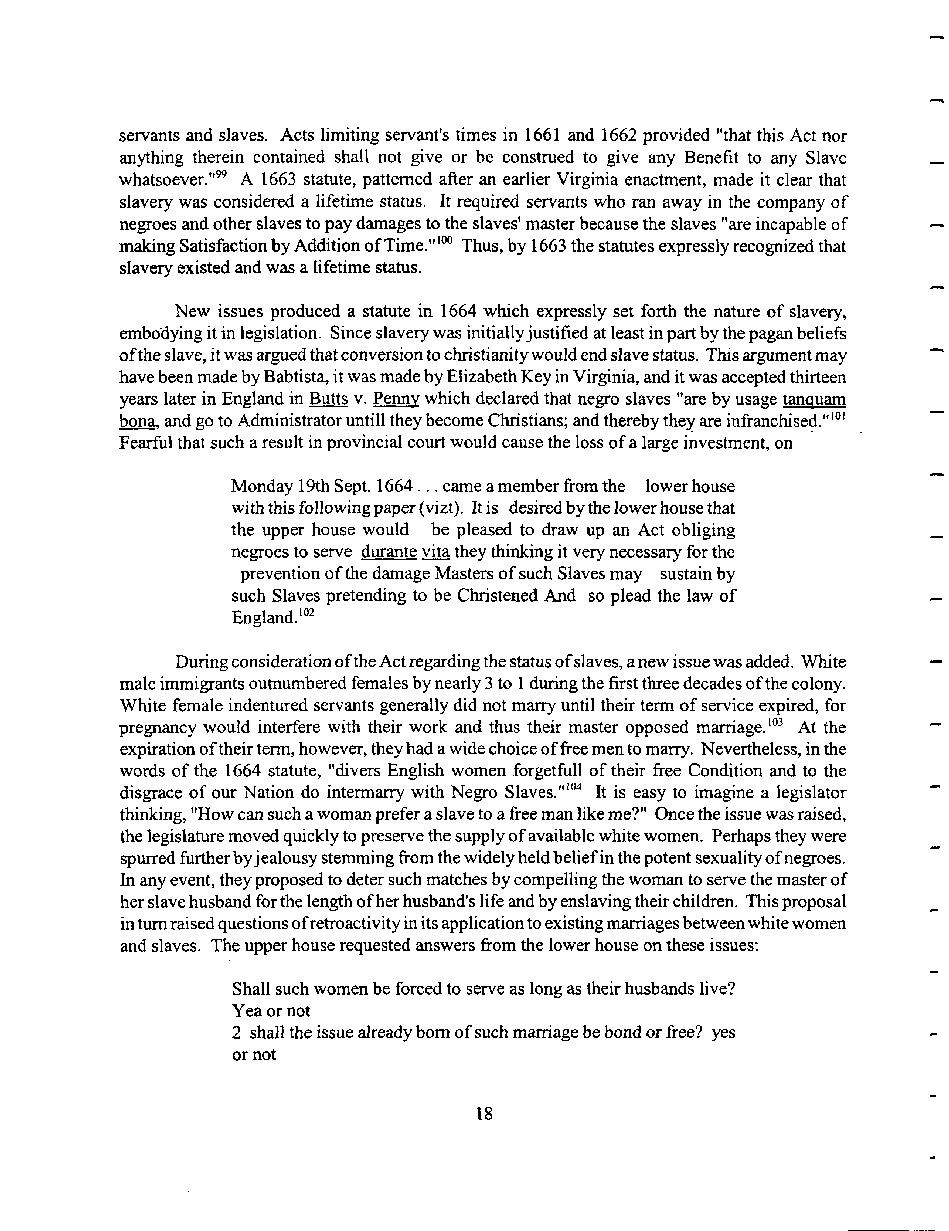|
servants and slaves. Acts limiting servant's times in 1661 and 1662 provided "that this Act nor
anything therein contained shall not give or be construed to give any Benefit to any Slave
whatsoever."99 A 1663 statute, patterned after an earlier Virginia enactment, made it clear that
slavery was considered a lifetime status. It required servants who ran away in the company of
negroes and other slaves to pay damages to the slaves' master because the slaves "are incapable of
making Satisfaction by Addition of Time."100 Thus, by 1663 the statutes expressly recognized that
slavery existed and was a lifetime status.
New issues produced a statute in 1664 which expressly set forth the nature of slavery,
embodying it in legislation. Since slavery was initially justified at least in part by the pagan beliefs
of the slave, it was argued that conversion to Christianity would end slave status. This argument may
have been made by Babtista, it was made by Elizabeth Key in Virginia, and it was accepted thirteen
years later in England in Butts v. Penny which declared that negro slaves "are by usage tanquam
bona, and go to Administrator untill they become Christians; and thereby they are infranchised."101
Fearful that such a result in provincial court would cause the loss of a large investment, on
Monday 19th Sept. 1664 ... came a member from the lower house
with this following paper (vizt). It is desired by the lower house that
the upper house would be pleased to draw up an Act obliging
negroes to serve durante vita they thinking it very necessary for the
prevention of the damage Masters of such Slaves may sustain by
such Slaves pretending to be Christened And so plead the law of
England.102
During consideration of the Act regarding the status of slaves, a new issue was added. White
male immigrants outnumbered females by nearly 3 to 1 during the first three decades of the colony.
White female indentured servants generally did not marry until their term of service expired, for
pregnancy would interfere with their work and thus their master opposed marriage.103 At the
expiration of their term, however, they had a wide choice of free men to marry. Nevertheless, in the
words of the 1664 statute, "divers English women forgetfull of their free Condition and to the
disgrace of our Nation do intermarry with Negro Slaves."104 It is easy to imagine a legislator
thinking, "How can such a woman prefer a slave to a free man like me?" Once the issue was raised,
the legislature moved quickly to preserve the supply of available white women. Perhaps they were
spurred further by jealousy stemming from the widely held belief in the potent sexuality of negroes.
In any event, they proposed to deter such matches by compelling the woman to serve the master of
her slave husband for the length of her husband's life and by enslaving their children. This proposal
in turn raised questions of retroactivity in its application to existing marriages between white women
and slaves. The upper house requested answers from the lower house on these issues:
Shall such women be forced to serve as long as their husbands live?
Yea or not
2 shall the issue already born of such marriage be bond or free? yes
or not
18
�
|

